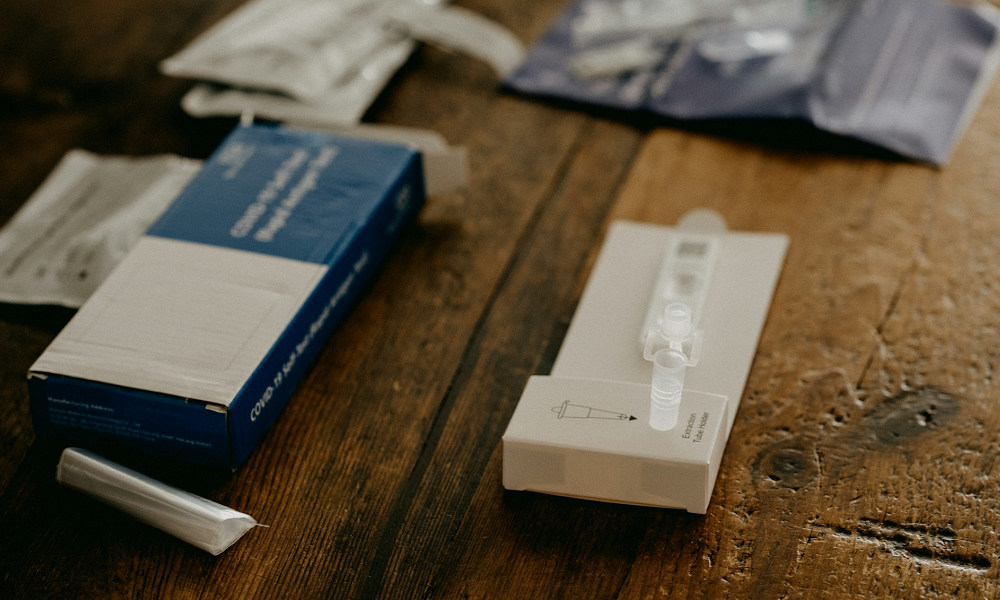Reviews
Self-Diagnosis and Responsibility: What Users Should Know About the Accuracy and Safety of Home Tests

In recent years, more people have prioritised their health. Home health checks are now common. Many prefer home tests to clinic visits for everything. This strategy gives people power and freedom. It saves time and provides seclusion, which is crucial for wellness. Though effective, home testing requires care, accountability, and understanding. These tools and how to read their results are essential for your safety and peace of mind.
Why People Choose to Test Themselves
People prefer home testing to appointments and waiting for results because they want immediate answers. This propensity is partly due to its ease. You can do a home test anytime without leaving the house.
Privacy matters too. When alone, many people feel more comfortable checking their health. Topics like hormone balance, fertility, and substance detection can be too personal to discuss. Private home testing is available.
There are now many types of home tests available for different needs. For example, a Breast Milk Alcohol Test can help new mothers check if their milk is safe for feeding. This type of product shows how personal and specific home testing can be. It supports people in making informed choices without stress or embarrassment.
Another reason for the growing use of home tests is the wish to understand one’s body better. People today are more aware of their health and want to monitor it regularly. Home testing gives them that opportunity.
Different Types of Home Tests and What They Can Show
Different home testing provides different information. Some detect illnesses, including urinary or respiratory issues. Others measure hormones to detect stress, thyroid function, and fertility. You can also test for allergies, food sensitivities, and vitamins.
Drug and alcohol tests are another common category. They can be useful for individuals who want to monitor their own health or for families who wish to ensure a safe environment. Some brands, like exploro products, offer a variety of easy-to-use home tests that focus on different health aspects. These kits are made to be practical and accessible for everyone.
But every test has limits. Home tests can give you an idea of a condition, but they can’t replace a doctor’s exam. Results may imply a conclusion, but they should not prove a health issue. Home testing informs patients and helps them decide if they need medical attention.
How to Use Home Tests Correctly for Reliable Results
A home test works best when used properly. Each product’s instructions must be followed precisely. Even little errors might cause issues. Not washing your hands before taking a sample or waiting long enough can reduce accuracy.
Check the expiration date before using a test. Expiring tests may yield inaccurate results. Test storage matters too. Keeping it in a hot or humid environment may damage its compounds.
Keep things clean and handle them carefully. Read the tutorial and repeat slowly before starting. Shortcuts and guesswork can change the outcome. People can trust test results more if they use them correctly.
Why Results May Not Always Be Perfect
Home exams aren’t ideal, even when they’re done right. There are several things that can affect how accurate they are. One of the most common reasons for mistakes is human error. The test results can be altered if you read them too soon or too late.
It’s also important how good the exam is. Different brands employ different kinds of materials and levels of sensitivity. Some people may notice a condition earlier or more clearly than others. The way things are stored is also important. A test may not work as planned if it has been in the sun, heat, or rain.
For these reasons, home tests should be seen as helpful tools instead of the last word. You should always talk to a doctor about a positive or confusing result. This manner, users may check their work and make sure they are doing the appropriate thing next.
Safety and Responsibility in Self-Diagnosis
While self-diagnosis gives you power, it also requires responsibility. People shouldn’t rely significantly on home tests. A test can hint at a problem, but not reveal it.
If a result is unclear or worrisome, visit a doctor. Professional help can help you interpret results and find answers. Failure to recognise signals or start treatment without assistance is risky.
Health data must also be handled carefully. Only trusted personnel should see or save results. Safeguarding personal health information is an acceptable use. Independent and diligent home testers can enjoy its benefits securely.
The Role of Modern Technology in Home Testing
Technology makes home testing easier and more accessible. Smartphone apps can track and analyse many contemporary exams. These apps can remind users to retake or prepare for exams.
New equipment with digital sensors makes findings easier to read. Instead of guessing hue or line intensity, an app or small display provides unambiguous information. Technology protects test data so consumers may track their health.
Home tests will become more accurate and simpler as technology advances. Make it easier to monitor your health while keeping it safe and reliable.
Bottom Line
With home tests, people take care of their health differently. You can learn more about your body without leaving home. These gadgets enable sickness screening and the Breast Milk Alcohol Test, making healthcare more accessible.
Self-testing involves responsibility. Tests can enlighten you and help you decide, but they shouldn’t replace professional care. Current tools and medical advice yield the best results.
Home testing can aid a healthy lifestyle if used properly. They keep individuals attentive, act early, and feel more in control of their health, but with care and balance.

-

 World2 days ago
World2 days agoCargo plane plunges into sea at Hong Kong airport; 2 killed
-

 Business6 days ago
Business6 days agoYouTube restores service after widespread global outage
-

 Legal1 day ago
Legal1 day agoMan armed with AR-15 arrested after threats to ‘shoot up’ Atlanta airport
-

 Health2 days ago
Health2 days agoMexico reports new human case of H5 bird flu
-

 World1 day ago
World1 day agoMagnitude 5.0 earthquake rattles Dominican Republic
-

 World7 days ago
World7 days agoCar bomb explodes near shopping mall in Ecuador’s largest city
-

 World4 days ago
World4 days agoEstonia permanently closes road through Russian territory
-

 World5 days ago
World5 days agoU.S. Special Operations helicopters spotted near Venezuela




